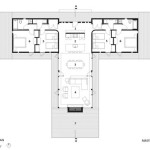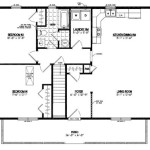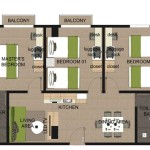Is There An App To Draw Floor Plans?
The creation of floor plans, once a domain exclusively held by architects and draftsmen wielding specialized tools, has undergone a significant transformation with the advent of technology. Today, numerous applications, readily available on smartphones and tablets, empower individuals to generate precise and detailed floor plans. These applications cater to a wide range of users, from real estate professionals and interior designers to homeowners and DIY enthusiasts. The accessibility, affordability, and user-friendliness of these apps have democratized the process of floor plan design, making it possible for anyone to visualize and plan their spaces with relative ease. This article delves into the landscape of floor plan applications, exploring their capabilities, features, and suitability for various purposes.
The proliferation of floor plan applications stems from the increasing demand for visual planning in various sectors. Real estate agents utilize these apps to create visually appealing listings that showcase the layout and dimensions of properties. Interior designers employ them to experiment with different furniture arrangements and design concepts before implementing them physically. Homeowners leverage these tools for renovation projects, space planning, and even creating virtual tours of their residences. The underlying principle uniting these applications is their ability to translate spatial concepts into a tangible, visual representation.
Functionality and Features of Floor Plan Apps
The core functionality of floor plan applications revolves around enabling users to digitally construct a representation of a physical space. This typically involves drawing walls, adding doors and windows, and specifying dimensions. However, the sophistication and feature sets vary significantly across different applications, influencing their suitability for specific tasks.
Basic Drawing and Measurement:
At their foundation, most floor plan apps offer basic drawing tools that allow users to create walls by tracing lines or tapping to define points. They typically provide measurement tools, either manual input or through integration with laser distance measures, to ensure accuracy. Some apps incorporate features like automatic wall squaring, which can correct minor imperfections in hand-drawn lines, enhancing the overall precision of the floor plan.
Object Libraries and 3D Visualization:
Many floor plan applications include extensive object libraries containing pre-designed furniture, appliances, fixtures, and other architectural elements. These objects can be easily dragged and dropped into the floor plan, enabling users to visualize how the space will look with different furnishings. Furthermore, some apps offer 3D visualization capabilities, allowing users to rotate the floor plan and view it from different angles, providing a more immersive and realistic representation of the space. This feature is particularly useful for interior design projects and visualizing spatial relationships.
Collaboration and Sharing:
Modern floor plan applications often incorporate features that facilitate collaboration among multiple users. This can include the ability to share floor plans with colleagues, clients, or family members, and to allow them to view, comment on, or even edit the plan. Some apps also integrate with cloud storage services, enabling users to access their floor plans from multiple devices and back up their work. Collaboration features are invaluable for team-based projects, such as architectural design or large-scale renovations.
Augmented Reality (AR) Integration:
A growing number of floor plan applications incorporate augmented reality (AR) technology. This allows users to overlay the digital floor plan onto a real-world view of the space using their smartphone or tablet's camera. This feature can be particularly useful for visualizing how furniture will fit in a room, or for identifying potential problems with the layout. AR integration enhances the user experience and offers a more intuitive and interactive way to interact with floor plans.
Import and Export Options:
The ability to import existing floor plans or export newly created ones is crucial for integrating floor plan applications into a broader workflow. Many apps support importing floor plans in various formats, such as PDF, DWG, or image files. This allows users to trace over existing plans, or to use them as a reference for creating new ones. Export options are equally important, allowing users to share their floor plans with architects, contractors, or other professionals in a format that they can easily access and use. Common export formats include PDF, DWG, and image files.Different Types of Floor Plan Apps
The landscape of floor plan applications can be broadly categorized into several types, each catering to different user needs and skill levels. Understanding these categories can help users select the application that best aligns with their requirements.
Simple Floor Plan Drawing Apps:
These applications are designed for ease of use and are typically targeted at homeowners or individuals with limited design experience. They offer a simplified interface, basic drawing tools, and a limited selection of objects. They are ideal for creating quick and basic floor plans for space planning, furniture arrangement, or simple renovation projects.
Professional Floor Plan Design Software:
This category encompasses more sophisticated applications that offer a wider range of features and tools, catering to the needs of architects, interior designers, and other professionals. These apps typically include advanced drawing tools, extensive object libraries, 3D visualization capabilities, and collaboration features. They are suitable for creating detailed and accurate floor plans for complex projects.
Real Estate Floor Plan Apps:
These applications are specifically designed for creating floor plans for real estate listings. They typically offer features such as automatic area calculation, branding options, and integration with real estate portals. They are optimized for creating visually appealing and informative floor plans that can help attract potential buyers or renters.
DIY Home Improvement Apps:
Some floor plan applications are tailored specifically for DIY home improvement projects. These apps often include features such as project planning tools, material calculators, and how-to guides. They are designed to help homeowners plan and execute their own renovation projects with greater confidence and efficiency.Key Considerations When Choosing a Floor Plan App
Selecting the right floor plan application involves careful consideration of several factors, including the user's skill level, the intended use of the app, and the desired features and functionalities. Here are some key aspects to evaluate:
Ease of Use:
The application should be intuitive and easy to learn, even for users with limited experience in floor plan design. Look for apps with clear instructions, helpful tutorials, and a user-friendly interface. A steep learning curve can be a significant barrier to adoption.
Accuracy and Precision:
Accurate measurements and precise drawing tools are essential for creating reliable and useful floor plans. Ensure that the application supports accurate measurement input and offers features that help maintain precision, such as automatic wall squaring.
Features and Functionality:
The application should offer the features and functionalities required for the intended purpose. Consider whether you need 3D visualization, object libraries, collaboration features, or augmented reality integration. Choose an app that provides the tools necessary to accomplish your goals.
Compatibility and Integration:
Verify that the application is compatible with your devices and operating systems. Also, consider whether the app integrates with other software or services that you use, such as cloud storage or real estate portals. Compatibility and integration can streamline your workflow and improve overall efficiency.
Pricing and Subscription Model:
Floor plan applications are available in a variety of pricing models, including free apps with limited features, one-time purchases, and subscription-based services. Evaluate the cost of the application and consider whether it aligns with your budget and usage needs. Subscription models may offer access to more features and ongoing updates, but they can also be more expensive over time.In conclusion, the availability of numerous floor plan applications has revolutionized the way individuals approach space planning and design. From simple drawing tools to sophisticated professional software, these applications offer a wide range of features and functionalities to cater to diverse user needs. By carefully considering the key aspects outlined above, users can select the floor plan application that best empowers them to visualize and plan their spaces effectively.

Draw Floor Plans With The Roomsketcher App
Floor Plan Creator Apps On Google Play

Draw Floor Plans With The Roomsketcher App

Roomsketcher App

20 Best Floor Plan Apps To Create Your Plans Foyr
Floor Plan Creator Apps On Google Play

11 Best Free Floor Plan For 2024

Draw Floor Plans With The Roomsketcher App
House Plan Drawing App Apps On Google Play

Floor Plan App Live Home 3d
Related Posts








